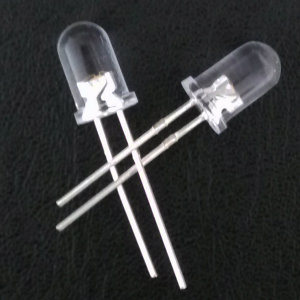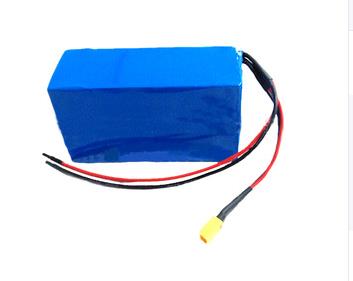Model NO.: LPILED-50334RGY
Trademark: LP. LPILED. LPINTE
Transport Package: ESD Package
Specification: CE
Origin: China
Model NO.: LPILED-50334RGY
Trademark: LP. LPILED. LPINTE
Transport Package: ESD Package
Specification: CE
Origin: China
5mm led, meet traffic light standard,
For traffic lamp
30 degree,
20mA
LPILED-50334YY-30D,Yellow 590-593-595nm, 4000-6000mcd
2.0-2.4VDC
LPILED-50334RR-30D,Red, 620-625-630nm, 4000-6000mcd
2.0.24vdc
LPILED-50334GG-30D, Green, 497-500-503-505-509nm, 8000-10000mcd
3.0-3.4VDC
Super brightness
Long lifespan more than 100, 000 hours
LENS: Dia 5mm x L8.6mm, Clear water
Lead length: short lead leg

LPILED,A light-emitting diode (LED) is a two-lead semiconductor light source. It is a p-n junction diode, which emits light when activated. When a suitable voltage is applied to the leads, electrons are able toÂ
Â
recombine with electron holes within the device, releasing energy in the form of photons. This effect is called electroluminescence, and the color of the light (corresponding to the energy of the photon) is determinedÂ
Â
by the energy band gap of the semiconductor.
Â
An LED is often small in area (less than 1 mm2) and integrated optical components may be used to shape its radiation pattern.
Appearing as practical electronic components in 1962, the earliest LEDs emitted low-intensity infrared light. Infrared LEDs are still frequently used as transmitting elements in remote-control circuits, such as those inÂ
Â
remote controls for a wide variety of consumer electronics. The first visible-light LEDs were also of low intensity, and limited to red. Modern LEDs are available across the visible, ultraviolet, and infrared wavelengths,Â
Â
with very high brightness.
Â
Early LEDs were often used as indicator lamps for electronic devices, replacing small incandescent bulbs. They were soon packaged into numeric readouts in the form of seven-segment displays, and were commonlyÂ
Â
seen in digital clocks. LPILED
Â
Recent developments in LEDs permit them to be used in environmental and task lighting. LEDs have many advantages over incandescent light sources including lower energy consumption, longer lifetime, improvedÂ
Â
physical robustness, smaller size, and faster switching. Light-emitting diodes are now used in applications as diverse as aviation lighting, automotive headlamps, advertising, general lighting, traffic signals, cameraÂ
Â
flashes and lighted wallpaper. As of 2015, LEDs powerful enough for room lighting remain somewhat more expensive, and require more precise current and heat management, than compact fluorescent lamp sourcesÂ
Â
of comparable output.
Â
LEDs have allowed new text, video displays, and sensors to be developed, while their high switching rates are also used in advanced communications technology.
Â
5mm led, meet traffic light standard,
For traffic lamp
30 degree,
20mA
LPILED-50334YY-30D,Yellow 590-593-595nm, 4000-6000mcd
2.0-2.4VDC
LPILED-50334RR-30D,Red, 620-625-630nm, 4000-6000mcd
2.0.24vdc
LPILED-50334GG-30D, Green, 497-500-503-505-509nm, 8000-10000mcd
3.0-3.4VDC
Super brightness
Long lifespan more than 100, 000 hours
LENS: Dia 5mm x L8.6mm, Clear water
Lead length: short lead leg

LPILED,A light-emitting diode (LED) is a two-lead semiconductor light source. It is a p-n junction diode, which emits light when activated. When a suitable voltage is applied to the leads, electrons are able toÂ
Â
recombine with electron holes within the device, releasing energy in the form of photons. This effect is called electroluminescence, and the color of the light (corresponding to the energy of the photon) is determinedÂ
Â
by the energy band gap of the semiconductor.
Â
An LED is often small in area (less than 1 mm2) and integrated optical components may be used to shape its radiation pattern.
Appearing as practical electronic components in 1962, the earliest LEDs emitted low-intensity infrared light. Infrared LEDs are still frequently used as transmitting elements in remote-control circuits, such as those inÂ
Â
remote controls for a wide variety of consumer electronics. The first visible-light LEDs were also of low intensity, and limited to red. Modern LEDs are available across the visible, ultraviolet, and infrared wavelengths,Â
Â
with very high brightness.
Â
Early LEDs were often used as indicator lamps for electronic devices, replacing small incandescent bulbs. They were soon packaged into numeric readouts in the form of seven-segment displays, and were commonlyÂ
Â
seen in digital clocks. LPILED
Â
Recent developments in LEDs permit them to be used in environmental and task lighting. LEDs have many advantages over incandescent light sources including lower energy consumption, longer lifetime, improvedÂ
Â
physical robustness, smaller size, and faster switching. Light-emitting diodes are now used in applications as diverse as aviation lighting, automotive headlamps, advertising, general lighting, traffic signals, cameraÂ
Â
flashes and lighted wallpaper. As of 2015, LEDs powerful enough for room lighting remain somewhat more expensive, and require more precise current and heat management, than compact fluorescent lamp sourcesÂ
Â
of comparable output.
Â
LEDs have allowed new text, video displays, and sensors to be developed, while their high switching rates are also used in advanced communications technology.
Â
The High Power Battery Pack is mainly used in various vehicles, ships, aircraft and other internal combustion engines, lighting, energy storage, uninterrupted power supply, mobile communication, portable electric tools, electric toys.there are some differences compared with other normal battery .
1.properties
High power Lithium Battery is a battery that powers a vehicle, usually compared to a small battery that powers a portable electronic device. And normal lithium battery is a kind of anode materials for lithium metal or lithium alloy, using nonaqueous electrolyte solution of a battery, and Rechargeable Battery lithium ion battery and lithium ion polymer battery is not the same
2.discharge power
a 4200 mah high power lithium battery can discharge all power in just a few minutes, but normal lithium battery could not do that completely, so normal lithium battery discharge ability cannot be compared with the high power lithium batteries entirely. The biggest difference between high power lithium battery and onormal lithium battery lies in its high discharge power and higher energy. Since high power lithium-ion batteries are mainly used for automotive energy supply, they have higher discharge power than ordinary batteries.
3.High Power Battery pack can discharge at higher instantaneous current than normal Lithium Battery Pack

High Power Battery Pack
High Power Battery Pack,High Power Battery,Battery Pack,Lithium Polymer Battery
YFJ TECHNOLOGY (HK) CO.,LIMITED , http://www.yfjpower.com



![<?echo $_SERVER['SERVER_NAME'];?>](/template/twentyseventeen/skin/images/header.jpg)